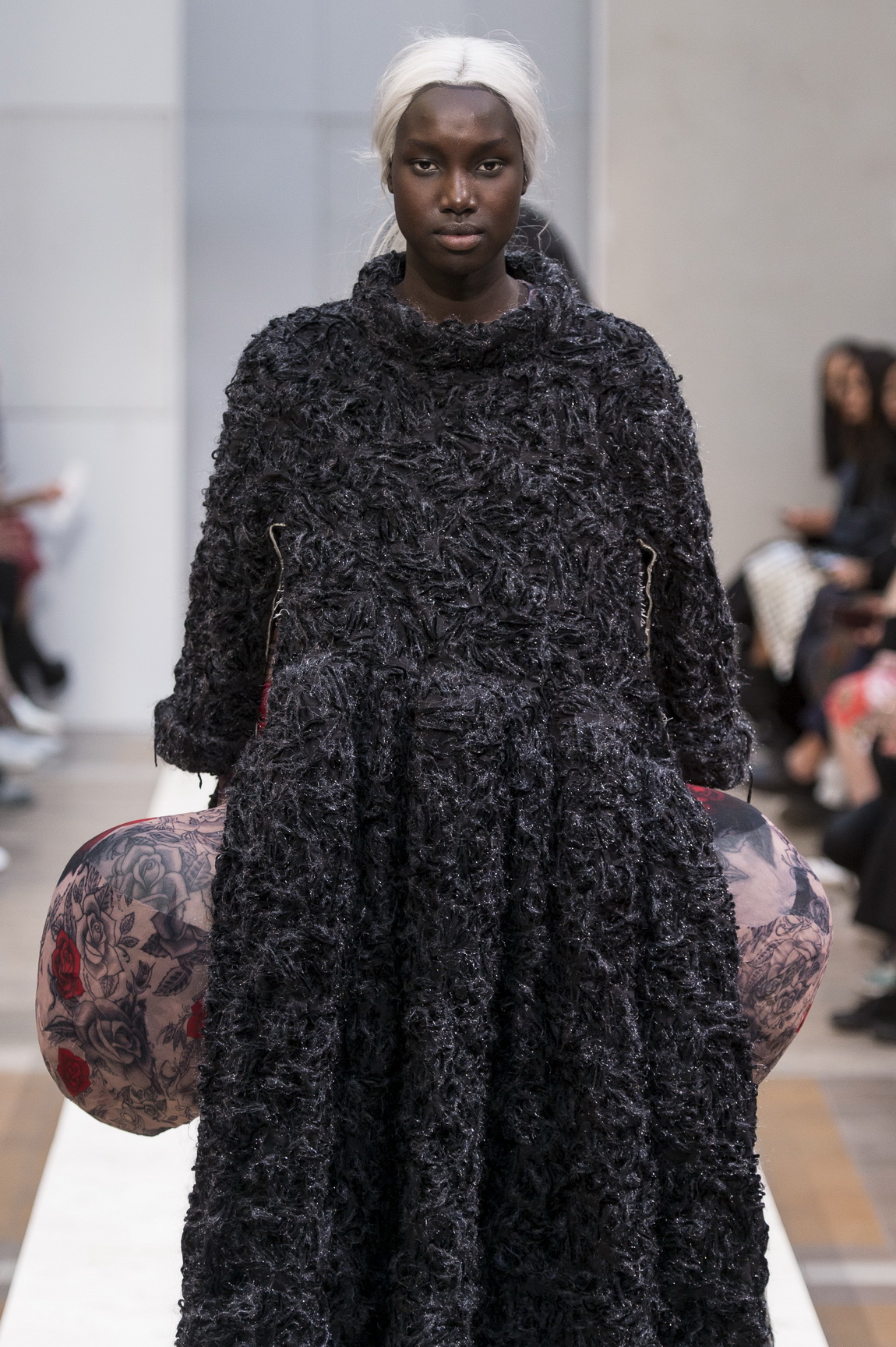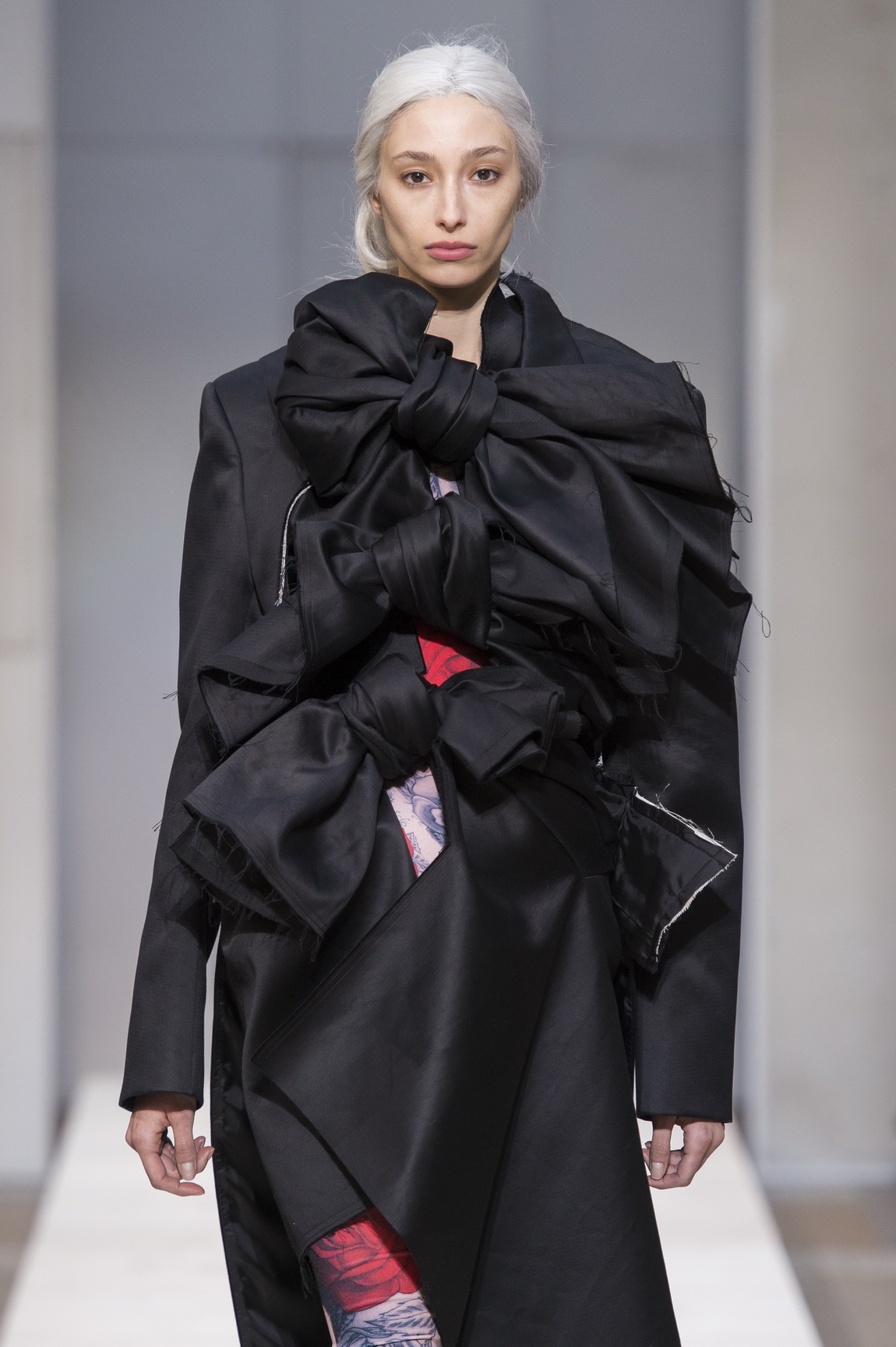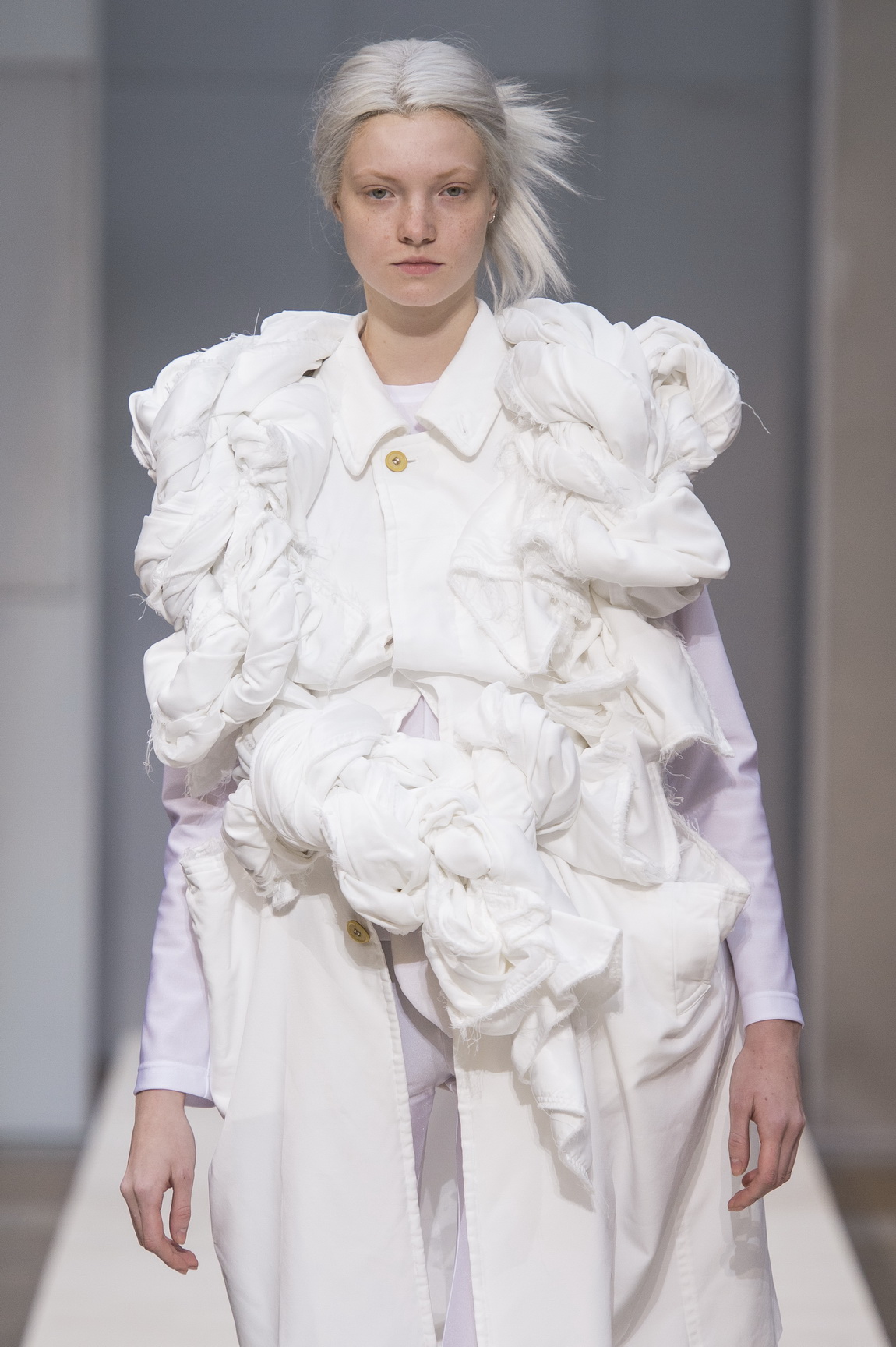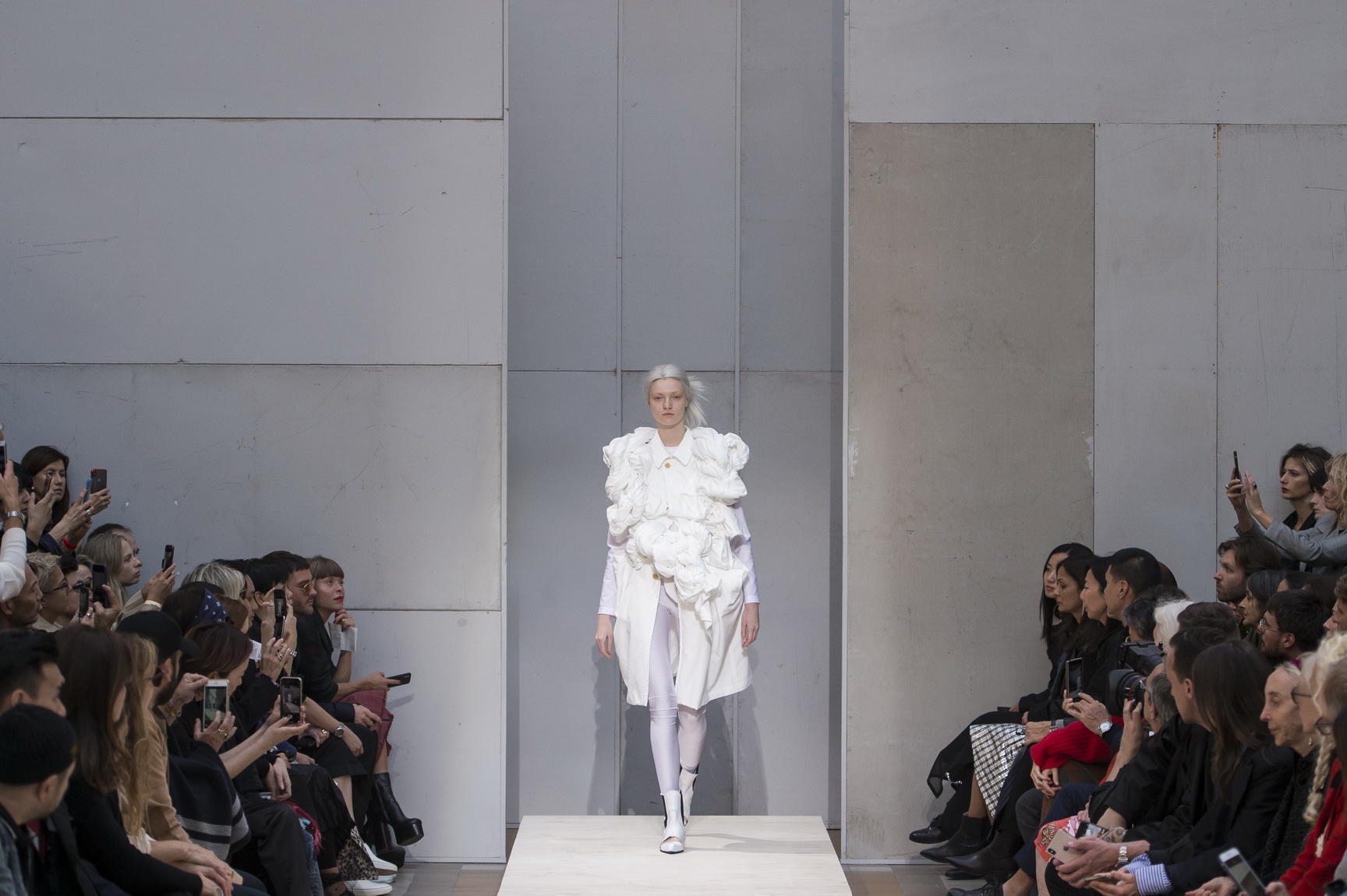The first model, at what was billed as a new form of presentation at Comme des Garçons, was cloaked in a form-fitting black tinselled coat. At a turn, the zipper revealed the gentle curve of pregnancy. The model had white hair tied messily at the nape of her neck. She was older, wiser but world-weary. She walked to the gravelly voice of Tom Waits. She was expectant not with a child, but a new idea.
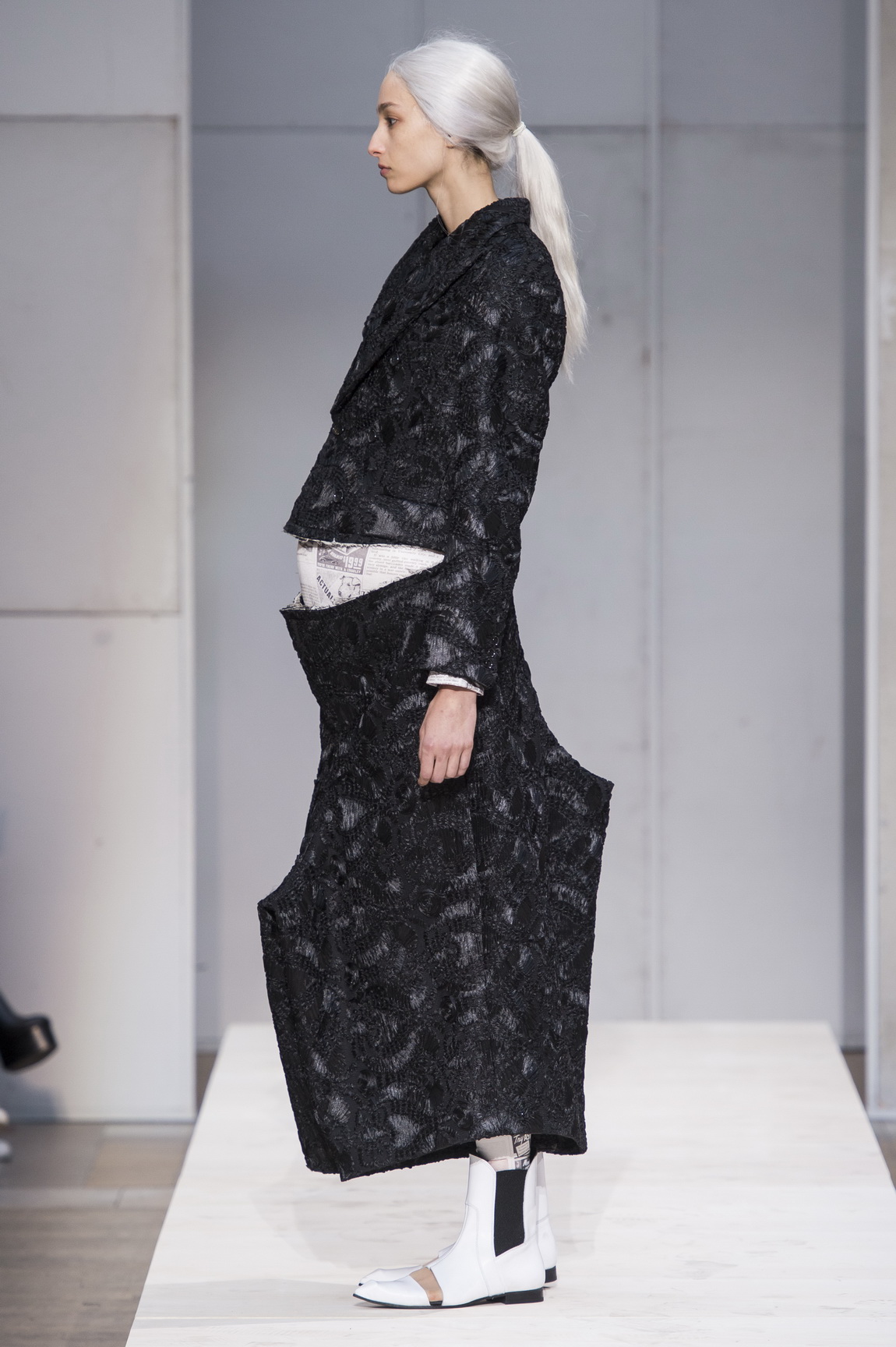
This was a turning point for Comme des Garçons, and one that is so well-timed. The audience emerged revived and full of hope, that yes, we can still find some sort of universal truth in clothing. A surprisingly lengthy written statement from Rei Kawakubo explained that after ten seasons of pushing the boundaries of making powerful clothes — i.e. sculptures that exploded with fabric, heft and surface decoration — she felt this approach was no longer new. And so she decided to look within. “Comme des Garçons from now on is not about outwardly evident design and expression, but about the design of content, about what’s deep inside.” Kawakubo of course is the sole architect of Comme des Garçons, even with her core family of staff around her, and that responsibility is giant. It weighs down the sloping shoulders of slashed blazers.
What’s inside us now is so often disguised and shrouded. Even as ugly truths come out (live streams and broadcasts of the Brett Kavanaugh hearings have punctuated the shows), and as we give more of ourselves on social media, our internalised self has never felt more sacred. And so, by cracking the underbelly open — quite literally at the seams — Kawakubo revealed something that addles us all.

The side seams of tailored jackets revealed bulbous forms swinging from the hips, or padded out rears, harking back to Kawakubo’s seminal 1997 Lumps and Bumps collection. But here, the curves were gentler, the protrusions intended not to shock, but to acknowledge something we already know. We nodded in agreement. We know the load we bear, in our hips, in our bellies but also on our minds. The tattoo-printed bodysuits with chains hanging from the sleeves said as much. What are women shackled to? To work? To family? To impossible expectations of our appearances? To have it all? These were the questions that Kawakubo posed with clothes that were pregnant with meaning, but tangible to touch and wear.
In a week in which the loss of female authorship over fashion has been mourned in some quarters, Rei Kawakubo has reaffirmed it, taking the reins back, opening herself up, to reveal a universal truth that is more urgent now than ever before. Kawakubo’s statement ended with: “Advancing ahead while fumbling around in the dark is also a risk. I believe that Comme des Garçons should choose the latter.” You wondered momentarily why more designers don’t fumble and therefore stumble onto something as deeply illuminating as Comme has just done. Then again, Kawakubo has always stood alone. Birthing new ways to run a fashion business and rearing a company that very much is voluntarily in creative free fall.
